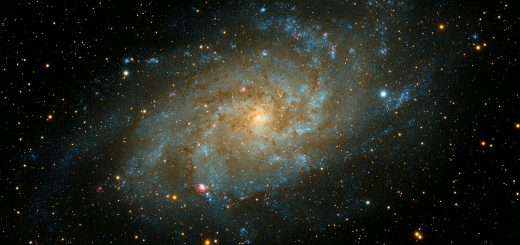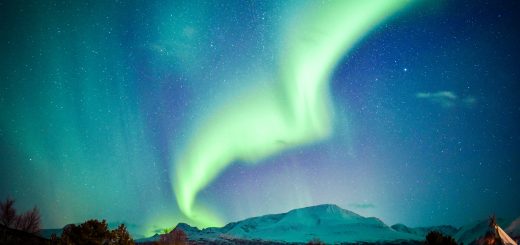The Most Devastating Natural Disasters in History

Before diving in, please note: This post is for informational purposes only. If you’d like to know more about how we approach topics, feel free to check out our friendly Disclaimer Page.
Hey there, amazing readers! 🖐️ Just a quick note: yes, we know there are a lot of ads here. Trust us, we get it—it’s not the prettiest look, but they help us keep this blog alive and kicking. Those pesky little ads cover the costs of all the behind-the-scenes magic, from hosting and tech stuff to creating content we hope you’ll love.
We’re committed to delivering quality posts, and your support (even just sticking around despite the ads) means everything to us. So, bear with us, and thanks for helping us keep the good vibes rolling. Now, on to the fun stuff! 😉
TRANSLATE BUTTON AT THE END OF THE ARTICLE
A Quick Overview
Natural disasters have a way of reminding us just how small we are in the grand scheme of things.
From the tiniest tremors to the most monumental tsunamis, nature’s power is both awe-inspiring and terrifying.
Throughout history, these catastrophic events have left indelible marks on the planet and its inhabitants.
In this article, we will delve into some of the most devastating natural disasters, exploring the causes, effects, and the stories that emerge in their wake.
Grab a cup of coffee, and let’s embark on this informative journey together!
A Glimpse into Nature’s Power: The Worst Disasters Ever
There’s something uniquely humbling about witnessing nature’s sheer strength.
Disasters come in many forms, each with its own devastating impact.
They can wipe out entire towns or change landscapes forever.
Some of the most notable disasters include earthquakes, hurricanes, tsunamis, and volcanic eruptions.
Have you ever wondered how these events affect communities long-term?
The aftermath can be just as catastrophic as the event itself.
Families are displaced, economies crumble, and the environment takes years, sometimes decades, to recover.
But through these challenges, humanity often finds a way to rise.
Each disaster shapes our understanding of preparedness, resilience, and the indomitable spirit of those affected.
So, let’s dig deeper into these incredible forces of nature and their stories.
Earthquakes: Tremors That Shook the World’s Foundations
Earthquakes are like nature’s version of a wake-up call.
They can strike without warning, leaving devastation in their wake.
The Great 1906 San Francisco Earthquake is a prime example.
The tremors reached a magnitude of 7.9, causing widespread destruction and igniting fires that burned for days.
Over 3,000 lives were lost, and the city was forever altered.
Then there’s the 2004 Indian Ocean earthquake, which triggered a tsunami that devastated coastal towns across multiple countries.
This disaster took an estimated 230,000 lives.
Imagine waking up to waves taller than buildings crashing into your home.
It’s a thought that sends shivers down my spine.
In Japan, the 2011 Tōhoku earthquake and tsunami highlighted the importance of preparedness.
A magnitude of 9.0 caused immense damage and led to a nuclear crisis at Fukushima.
It was a stark reminder that, even in a technologically advanced society, nature can still throw a wrench in our plans.
Earthquakes remind us of our vulnerability.
They often lead to secondary disasters, like tsunamis or landslides.
Many regions worldwide are earthquake-prone, so awareness is key.
Hurricanes: The Winds of Change and Their Impact
Hurricanes, or typhoons as they’re known in some areas, are powerful storms that can wreak havoc on coastal communities.
Take Hurricane Katrina in 2005, for example.
This storm had winds exceeding 175 mph and resulted in catastrophic flooding.
Over 1,800 lives were lost, and damage costs reached $125 billion.
The storm brought to light issues of preparedness, response, and rebuilding.
The infamous Hurricane Maria in 2017 devastated Puerto Rico, leaving many without power for months.
The recovery has been a long, arduous road filled with unresolved struggles.
When the winds die down, the real work begins.
What’s fascinating about hurricanes is their unpredictability.
They form over warm ocean waters and can change direction rapidly.
This keeps meteorologists on their toes!
Some interesting points about hurricanes:
They can spawn tornadoes.
The Saffir-Simpson scale measures hurricane intensity.
Communities often build levees and other barriers to mitigate damage.
Tsunamis: Nature’s Mighty Waves Transforming Coasts
Tsunamis are perhaps one of the most terrifying natural disasters, and for a good reason.
Imagine a wave so massive it can sweep away entire towns.
The 2004 Indian Ocean tsunami, triggered by an underwater earthquake, is a stark reminder of this reality.
This disaster impacted countries from Indonesia to Somalia, illustrating the far-reaching effects of oceanic disturbances.
Over 230,000 lives were lost, making it one of the deadliest tsunamis in recorded history.
Tsunamis can travel at speeds of up to 500 mph in deep water.
As they approach the shore, they slow down but grow in height, sometimes reaching over 100 feet.
The sheer force of these waves can transform landscapes, obliterating everything in their path.
Here are a few key points to remember about tsunamis:
They can be caused by earthquakes, volcanic eruptions, or landslides.
Early warning systems are critical for saving lives.
Tsunamis can have devastating effects on marine and coastal ecosystems.
Volcanic Eruptions: Fire and Fury from Beneath the Earth
Volcanoes, while mesmerizing, can unleash fiery destruction.
The eruption of Mount Vesuvius in AD 79 is one of the most famous disasters in history.
It buried the Roman cities of Pompeii and Herculaneum under ash and pumice.
This sudden catastrophe preserved these cities for centuries, offering a glimpse into ancient life when excavated.
More recently, the 1980 eruption of Mount St.
Helens in Washington state reminded us that volcanoes are still active.
The blast reduced the mountain’s elevation and sent ash clouds across multiple states.
The landscape was forever changed, and recovery took years.
Volcanic eruptions can lead to other dangers, such as ashfall and pyroclastic flows, which are fast-moving currents of hot gas and volcanic matter.
Some notable points to consider:
Volcanic eruptions can change climate patterns.
They can create fertile soil in surrounding areas post-eruption.
Monitoring volcanic activity is essential for disaster preparedness.
Floods: When Mother Nature Overflows Her Banks
Floods can occur in various forms, from river flooding to flash floods.
They often happen after heavy rain or rapid snowmelt.
One of the most devastating floods in history took place in 1931 in China, estimated to have claimed between 1 and 4 million lives.
The Yangtze, Huai, and Yellow Rivers overflowed their banks, impacting millions of people.
In recent history, Hurricane Harvey in 2017 brought catastrophic flooding to Houston, Texas.
The relentless rain caused rivers to overflow and homes to be submerged.
People were forced to evacuate, and the aftermath left many without shelter or resources.
Flooding can have long-lasting effects, including waterborne diseases and infrastructure damage.
It is crucial for communities to have a flood management plan in place.
Here are some insights about flooding:
Floodplain management can lessen risks.
Dams and levees are often constructed to control water flow.
Awareness and preparation can save lives during flood events.
Droughts: A Silent Crisis Affecting Millions Worldwide
Droughts may not be as dramatic as other disasters, but their effects can be just as deadly.
These prolonged periods of low rainfall lead to water shortages, affecting agriculture, drinking water supplies, and ecosystems.
The Dust Bowl of the 1930s in the United States remains a poignant example.
It caused massive agricultural failure and forced thousands of people to relocate.
In recent years, droughts in places like Cape Town, South Africa, have raised alarms about water scarcity.
The city faced a “Day Zero” scenario when water supplies were projected to run dry.
Fortunately, concerted efforts led to a successful campaign to conserve water and avert disaster.
Droughts can exacerbate tensions over water resources.
They often lead to food shortages and economic strain.
Sustainable practices can help mitigate the effects.
Wildfires: The Unexpected Fury of Flames and Ashes
Wildfires are an alarming force of nature that can erupt with little warning.
The 2019-2020 Australian bushfires serve as a recent reminder of their devastation.
These fires burned millions of acres, destroyed homes, and led to the loss of human and animal lives.
In California, wildfires have become a routine summer threat.
The Camp Fire in 2018 destroyed the town of Paradise, resulting in 85 fatalities.
The emotional toll on affected families is immense, showcasing the need for better forest management and fire prevention strategies.
Wildfires can spread rapidly, fueled by dry conditions and strong winds.
They also have a lasting impact on air quality and can lead to soil erosion.
Here are some takeaways about wildfires:
They can be sparked by natural causes or human activity.
Firefighting efforts can be dangerous and complex.
Recovery and rebuilding can take years for affected communities.
Avalanches: The Snowy Tsunami of the Mountains
Avalanches are a silent danger lurking in wintery landscapes.
They occur when a mass of snow, ice, and debris rushes down a mountainside.
The 2010 avalanche in the Himalayas tragically claimed the lives of 20 climbers.
In ski resorts, avalanches can be deadly for adventurers and thrill-seekers.
Educating people about avalanche safety is essential for minimizing risks.
Here are a few points about avalanches:
They can be triggered by natural factors like heavy snowfall.
Avalanche beacons can help locate buried individuals.
Understanding terrain and weather conditions is vital for safety.
Tornadoes: Swirling Winds of Destruction and Beauty
Tornadoes are fascinating yet formidable.
They form from severe thunderstorms and can cause unimaginable destruction in mere minutes.
The 2011 Joplin tornado in Missouri left a path of destruction that claimed 158 lives.
Tornadoes come in various shapes and sizes, often leaving behind a unique “damage path” that can be studied for meteorological insights.
Key points about tornadoes include:
They are classified using the Enhanced Fujita scale.
Tornadoes can produce winds exceeding 300 mph.
Awareness and community preparedness are crucial for safety.
Ice Storms: The Unexpected Freeze of Nature’s Fury
Ice storms can catch communities off-guard, as they often come with little warning.
The 1998 ice storm in Canada and the northeastern U.S. left millions without power for weeks.
The weight of the ice can lead to downed trees and power lines, creating hazardous conditions.
These storms remind us that winter weather can be just as dangerous as summer storms.
Communities must be prepared for icy conditions, as they can disrupt daily life and lead to safety hazards.
Here are some insights about ice storms:
They often lead to dangerous travel conditions.
Emergency preparedness is essential for winter weather.
Communities must work together to restore services after an ice storm.
Resilience: How Communities Rise After Disasters Strike
Despite the devastation caused by natural disasters, one of humanity’s greatest strengths is resilience.
Communities band together, offering support and rebuilding after catastrophes.
Take the example of New Orleans after Hurricane Katrina.
The city faced immense challenges, but the spirit of its people shone through.
Artists, musicians, and volunteers came together to create a vibrant culture of recovery.
People share their stories, finding strength in one another.
It’s the small acts of kindness that can mean the most during dark times.
Resilience can be nurtured through:
Community programs and outreach.
Education on disaster preparedness.
Building stronger infrastructures.
Conclusion
Natural disasters remind us of nature’s power and our shared vulnerability.
While these events can devastate lives and landscapes, they also showcase our resilience and capacity to rebuild.
From earthquakes to droughts, each disaster comes with stories of loss, recovery, and hope.
As we move forward, it’s crucial to learn from these events.
Preparedness, awareness, and community support can make a world of difference.
So, let’s come together to share knowledge and experiences, standing strong against whatever nature throws our way!

The Enlightenment Journey is a remarkable collection of writings authored by a distinguished group of experts in the fields of spirituality, new age, and esoteric knowledge.
This anthology features a diverse assembly of well-experienced authors who bring their profound insights and credible perspectives to the forefront.
Each contributor possesses a wealth of knowledge and wisdom, making them authorities in their respective domains.
Together, they offer readers a transformative journey into the realms of spiritual growth, self-discovery, and esoteric enlightenment.
The Enlightenment Journey is a testament to the collective expertise of these luminaries, providing readers with a rich tapestry of ideas and information to illuminate their spiritual path.
Our Diverse Expertise 🌟
While our primary focus is on spirituality and esotericism, we are equally passionate about exploring a wide range of other topics and niches 🌍📚. Our experienced team is dedicated to delivering high-quality, informative content across various subjects ✨.
To ensure we provide the most accurate and valuable insights, we collaborate with trusted experts in their respective domains 🧑🏫👩🏫. This allows us to offer well-rounded perspectives and knowledge to our readers.
Our blog originally focused on spirituality and metaphysics, but we’ve since expanded to cover a wide range of niches. Don’t worry—we continue to publish a lot of articles on spirituality! Frequently visit our blog to explore our diverse content and stay tuned for more insightful reads.





